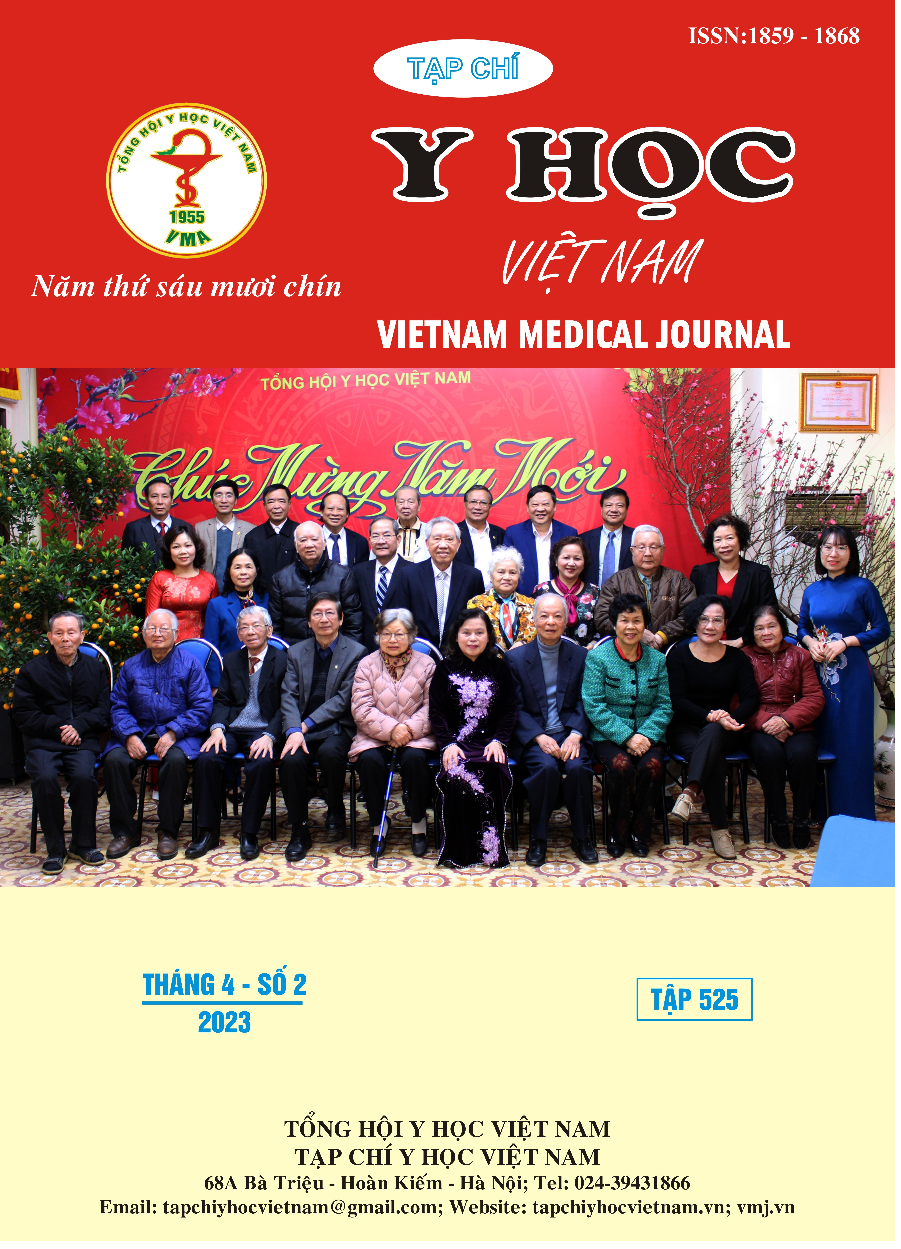EVALUATION OF THE EFFECTIVENESS OF PHARMACIST’S INTERVENTIONS ON VANCOMYCIN THEAPY MONITORING IN THE INTENSIVE CARE UNIT - ANTI-POISON, NGUYEN TRI PHUONG HOSPITAL
Main Article Content
Abstract
Objective: Evaluating the effectiveness of the pharmacist’s interventions for applying TDM vancomycin guidelines at the Intensive Care Unit - Anti-Poison, Nguyen Tri Phuong Hospital. Subjects and methods: Retrospectively reviewed 82 medical records with TDM vacomycin, of which 40 were in the period without a clinical pharmacist (before the intervention from 3/2020 to 8/2020) and 42 in the period with a clinical pharmacist working at the Intensive Care Unit - Anti-poison (intervention from 9/2020 to 2/2021). Results: The rate of adherence to dose adjustment according to the TDM guide increased from 60.6% to 79.2%, the difference was statistically significant, p = 0.019. The percentage of samples with trough concentrations reaching the treatment target increased from 26.7% to 42.0%, the difference was statistically significant, p=0.036. The proportion of patients with at least one trough concentration in the target range increased from 35.0% to 57.1%, the difference was statistically significant, p=0.039. The length of hospital stay decreased from 28.6 days to 22.5 days, the difference was not statistically significant. Conclusions: Implementation of Vancomycin TDM Guide with clinical pharmacist’s intervention increases the rate of samples reaching therapeutic target concentrations, and increases the rate of patient reaches the target concentration.
Article Details
Keywords
Therapeutic Drug Monitoring, vancomycin, pharmacist’s intervention, guidelines, antibiotics.
References
2. Đặng Nguyễn Đoan Trang (2019). Khảo sát và đánh giá hiệu quả theo dõi nồng độ vancomycin trong trị liệu tại Bệnh viện Đại học Y Dược TP. Hồ Chí Minh. Nghiên cứu dược và thông tin thuốc, 10(3):30-37.
3. Đinh Thị Thuý Hà (2021). Khảo sát và đánh giá việc sử dụng kháng sinh vancomycin tại bệnh viện đa khoa Đồng Nai. Tạp chí Y học Việt Nam, 501(1):34-38.
4. Lưu Thị Thu Trang (2020). Phân tích đặc điểm sử dụng vancomycin trong điều trị nhiễm khuẩn huyết tại trung tâm Bệnh viện Nhiệt Đới, Bệnh viện Bạch Mai. Khoá luận tốt nghiệp dược sĩ, Đại học Dược Hà Nội, Hà Nội.
5. Trần Duy Anh (2017). Nghiên cứu áp dụng phác đồ truyền tĩnh mạch liên tục vancomycin thông qua giám sát nồng độ thuốc trong máu tại khoa hồi sức tích cực, Bệnh viện Bạch Mai. Luận án tốt nghiệp Dược Sĩ, Trường Đại Học Dược Hà Nội, Hà Nội.
6. Trần Ngọc Phương Minh (2019). Đánh giá hiệu quả của việc áp dụng hướng dẫn theo dõi nồng độ vancomycin trong trị liệu tại Bệnh viện Đại Học Y dược Thành phố Hồ Chí Minh. Tạp chí Nghiên cứu Dược và Thông tin thuốc, 10(3):33-37.
7. Baptista JP et al (2012). Augmented renal clearance in septic patients and implications for vancomycin optimisation. Int J Antimicrob Agents, 39 (5):420-3.
8. Truong J et al (2018). Outcomes of Vancomycin plus a β-Lactam versus Vancomycin Only for Treatment of Methicillin-Resistant Staphylococcus aureus Bacteremia. Antimicrob Agents Chemother, 62(2):e01554-17.


